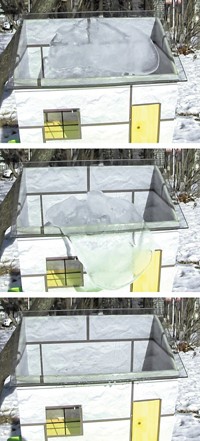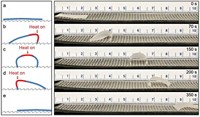Advertisement
Grab your lab coat. Let's get started
Welcome!
Welcome!
Create an account below to get 6 C&EN articles per month, receive newsletters and more - all free.
It seems this is your first time logging in online. Please enter the following information to continue.
As an ACS member you automatically get access to this site. All we need is few more details to create your reading experience.
Not you? Sign in with a different account.
Not you? Sign in with a different account.
ERROR 1
ERROR 1
ERROR 2
ERROR 2
ERROR 2
ERROR 2
ERROR 2
Password and Confirm password must match.
If you have an ACS member number, please enter it here so we can link this account to your membership. (optional)
ERROR 2
ACS values your privacy. By submitting your information, you are gaining access to C&EN and subscribing to our weekly newsletter. We use the information you provide to make your reading experience better, and we will never sell your data to third party members.
Materials
Materials With SMARTS
Hydrogel-based coatings maintain internal temperature with self-regulating chemical-mechanical feedback mechanism
by Lauren K. Wolf
July 16, 2012
| A version of this story appeared in
Volume 90, Issue 29
Windows might one day become more energy efficient with help from a self-regulating thermal coating, according to a report in Nature (DOI: 10.1038/nature11223). Joanna Aizenberg of Harvard University, Anna C. Balazs of the University of Pittsburgh, and colleagues developed polymer-based materials that maintain their internal temperature within a 1.7 °C range regardless of surrounding conditions. Called SMARTS, for self-regulated mechanochemical adaptively reconfigurable tunable system, the coatings are composed of catalyst-tipped microposts embedded in a temperature-responsive poly(N-isopropylacrylamide) hydrogel. A thin liquid layer containing chemical reagents rests atop the gel. Like hairs on a person’s arm, the tiny posts stand up at low temperature as the hydrogel absorbs water and swells. The catalyst on the post tips then reacts exothermally with compounds in the reagent layer, causing the gel to heat and contract. When that happens, the posts flop over, moving out of reach of the reagent layer. Thereafter, the cycle repeats as the chemical reaction switches on and off in a feedback loop. Besides being useful to control weather-responsive building materials, the patented SMARTS might also be incorporated into biochemical sensors, robotics, and medical implants, Aizenberg says.





Join the conversation
Contact the reporter
Submit a Letter to the Editor for publication
Engage with us on Twitter